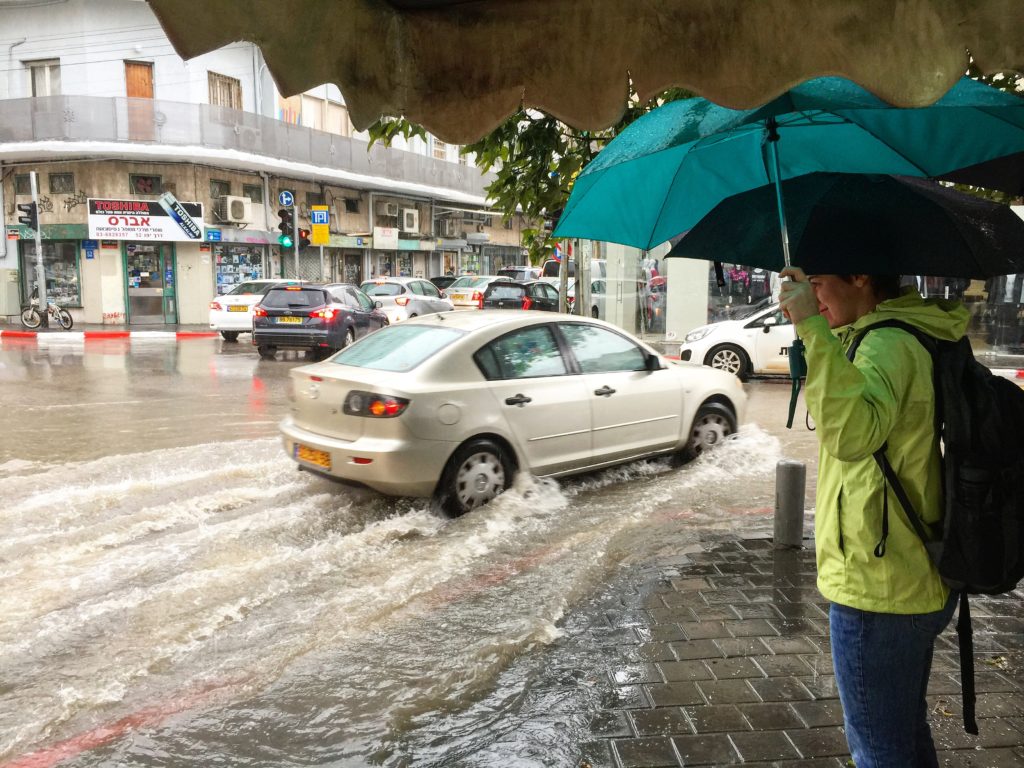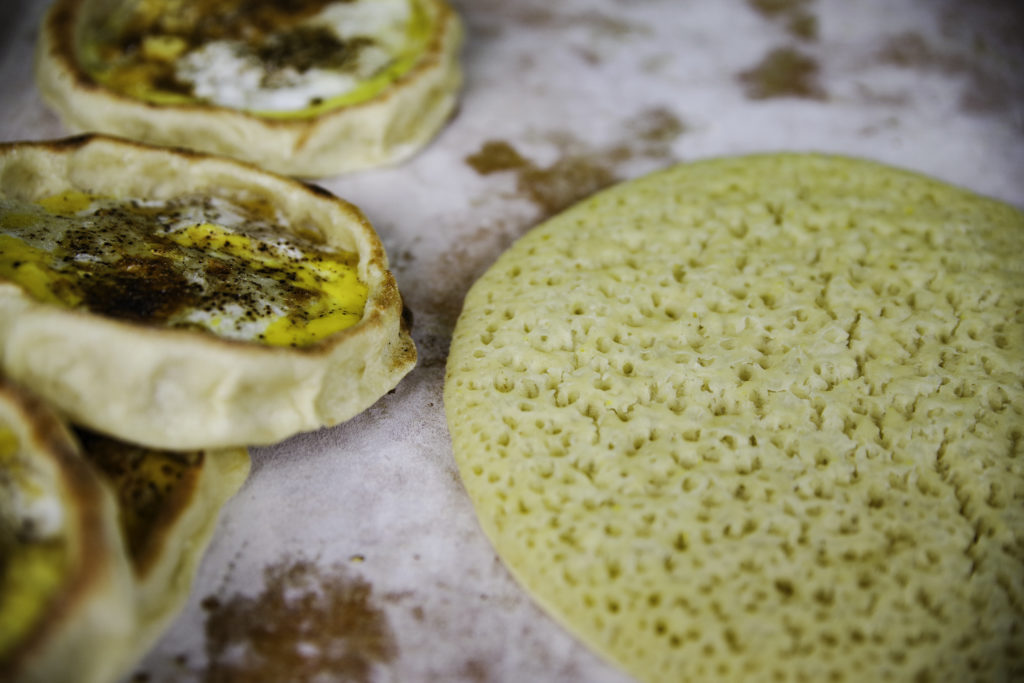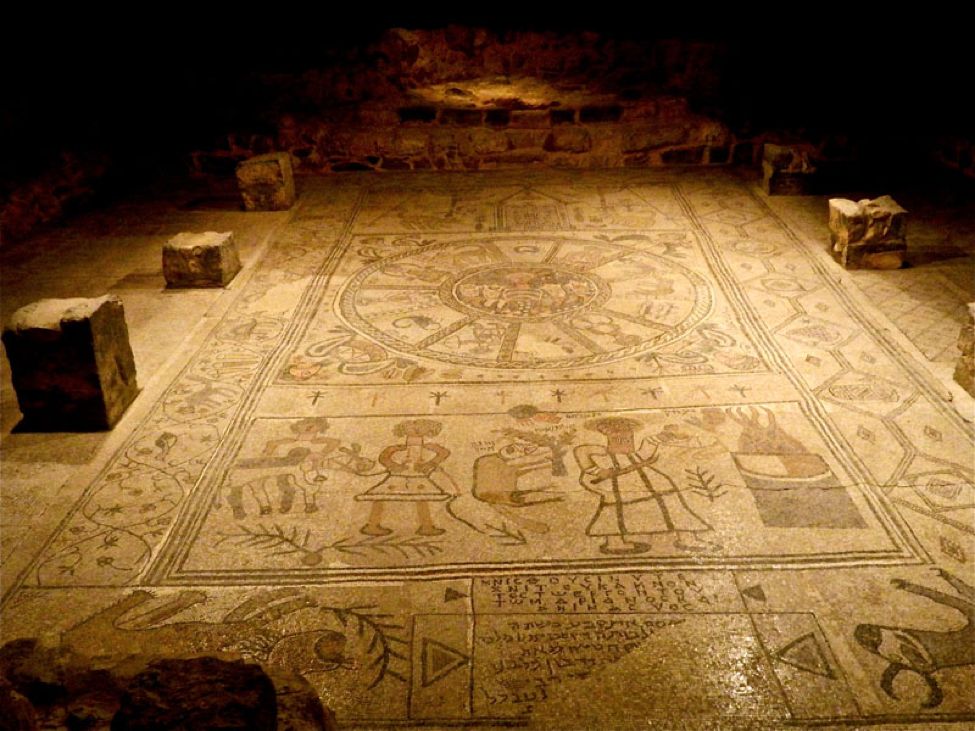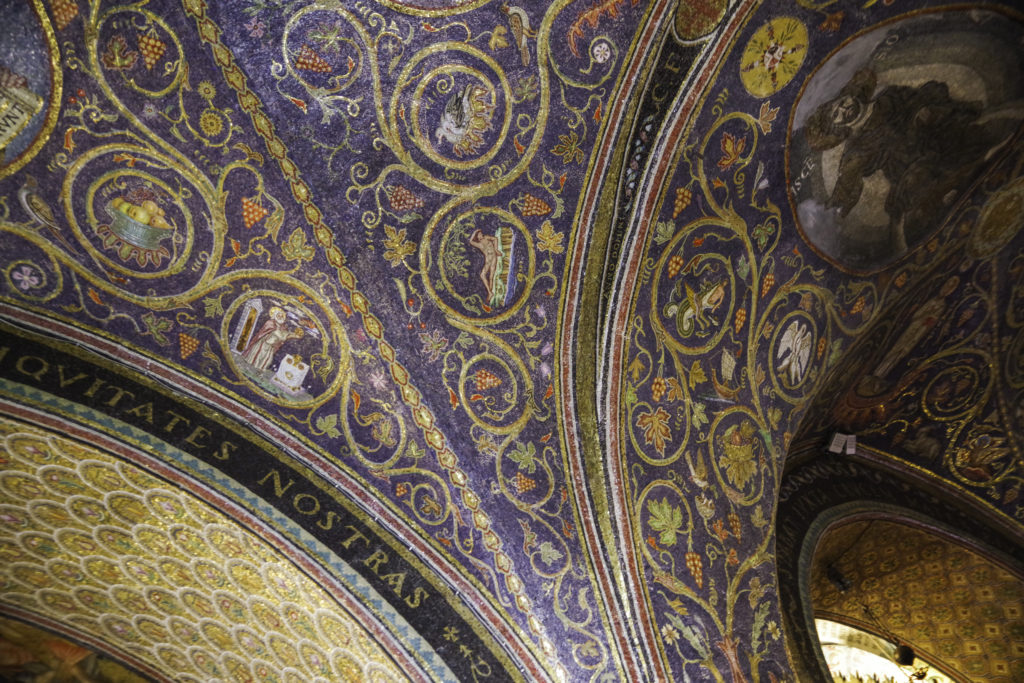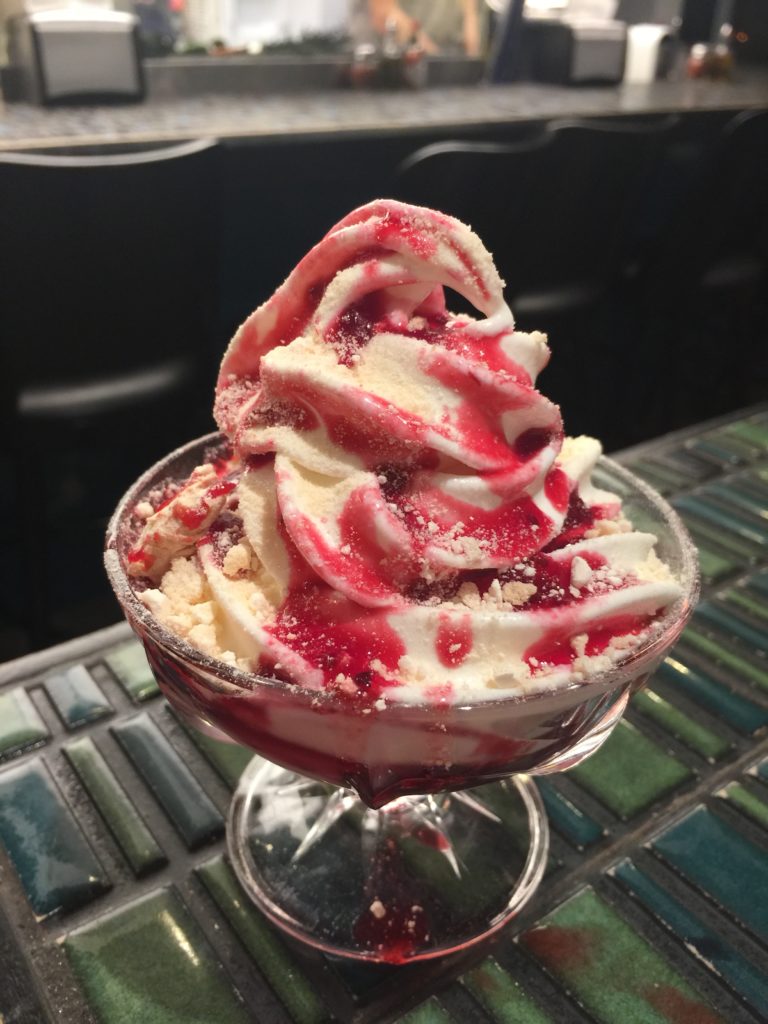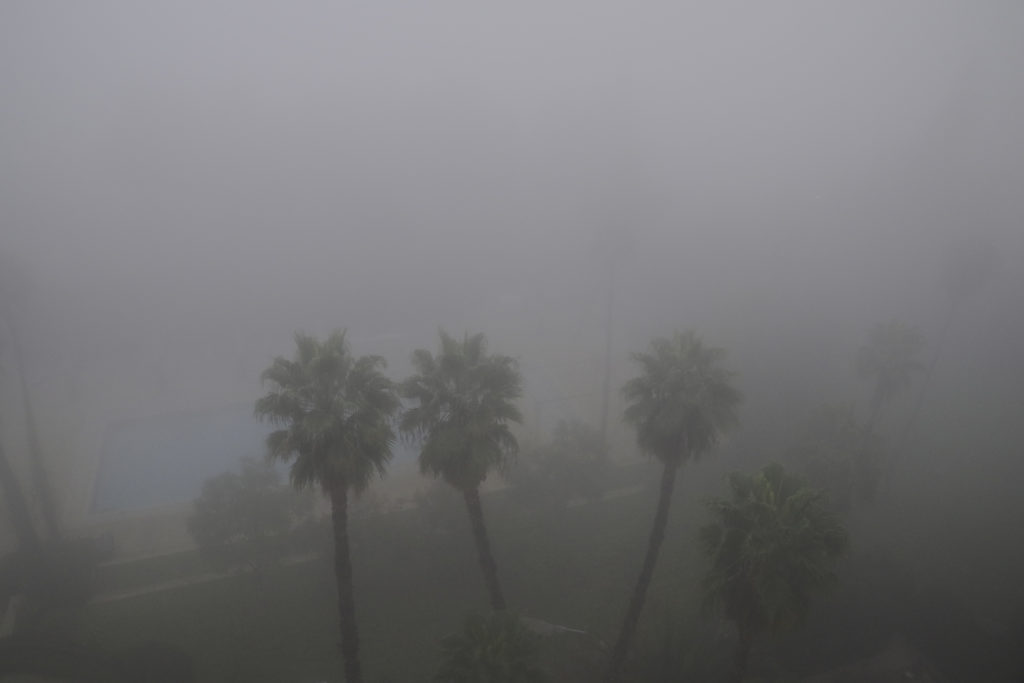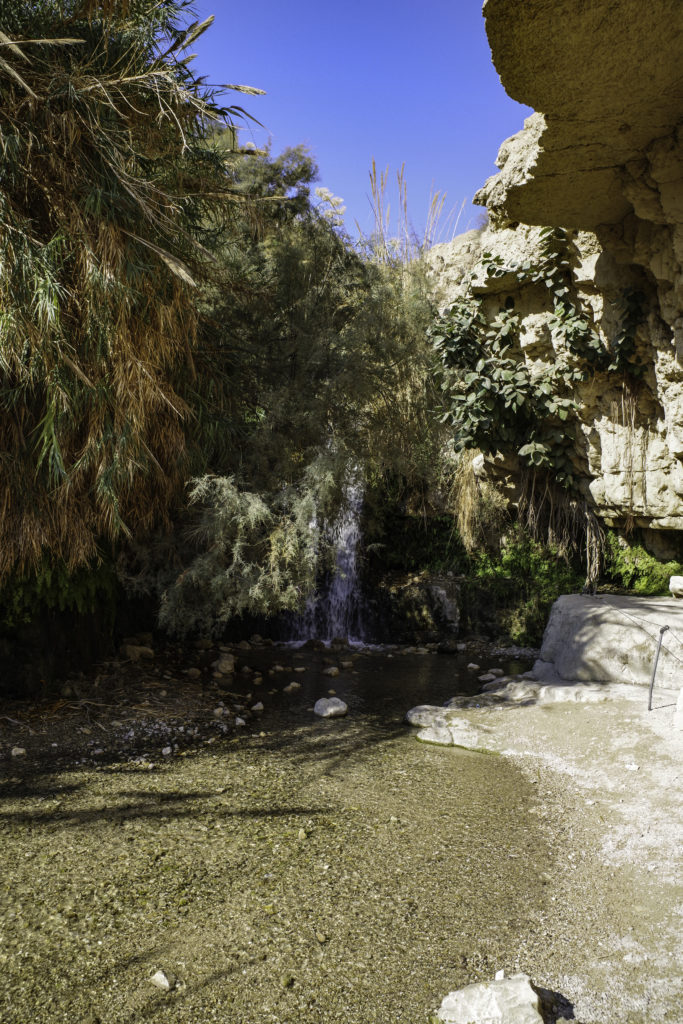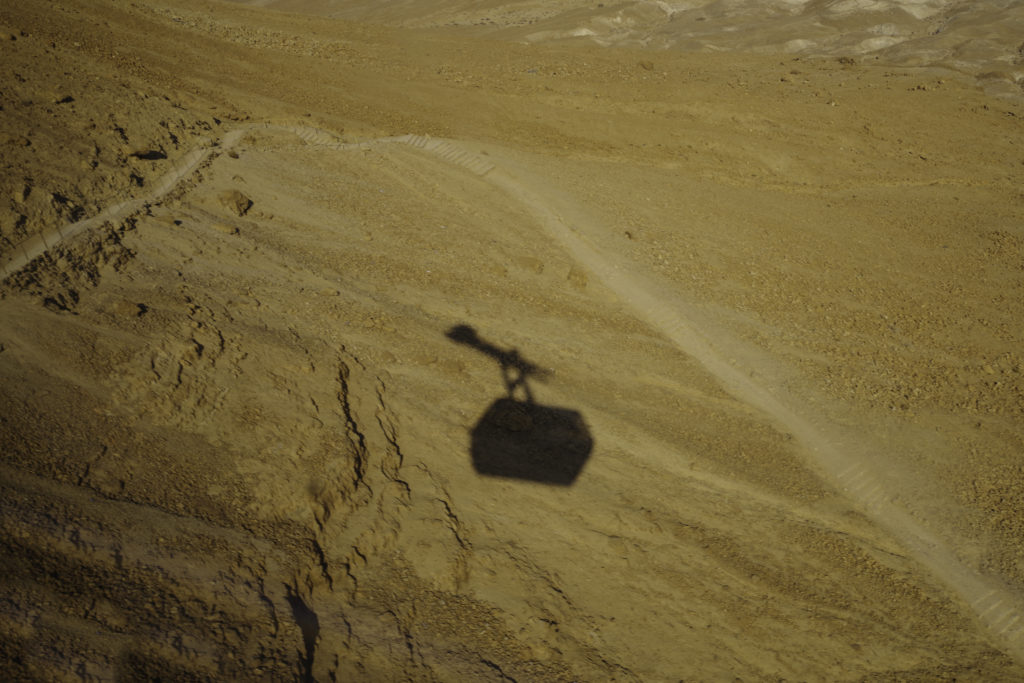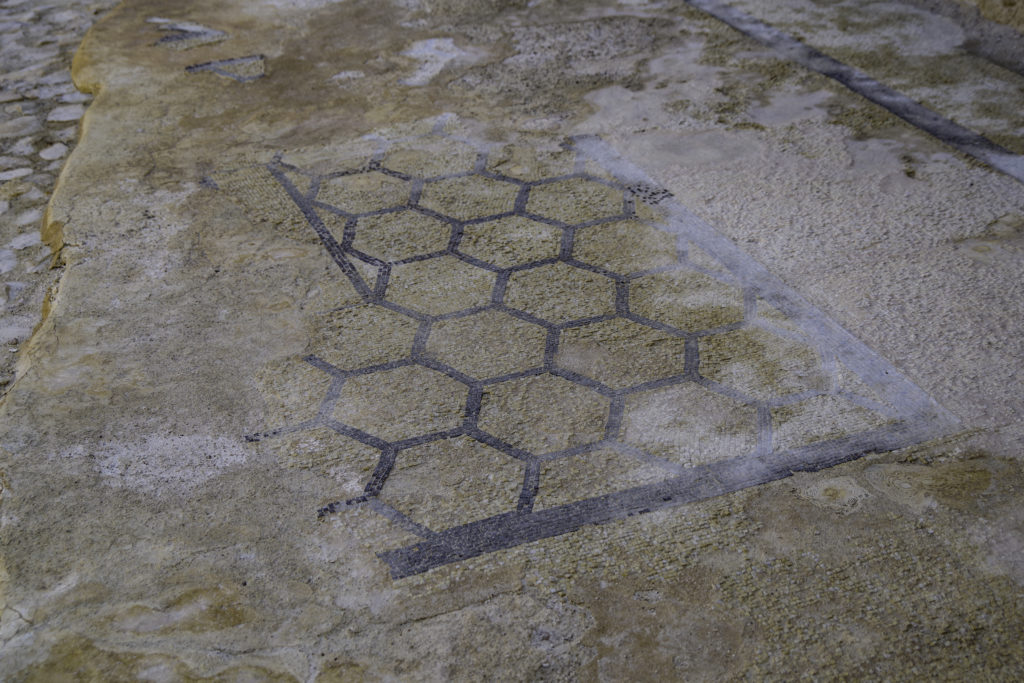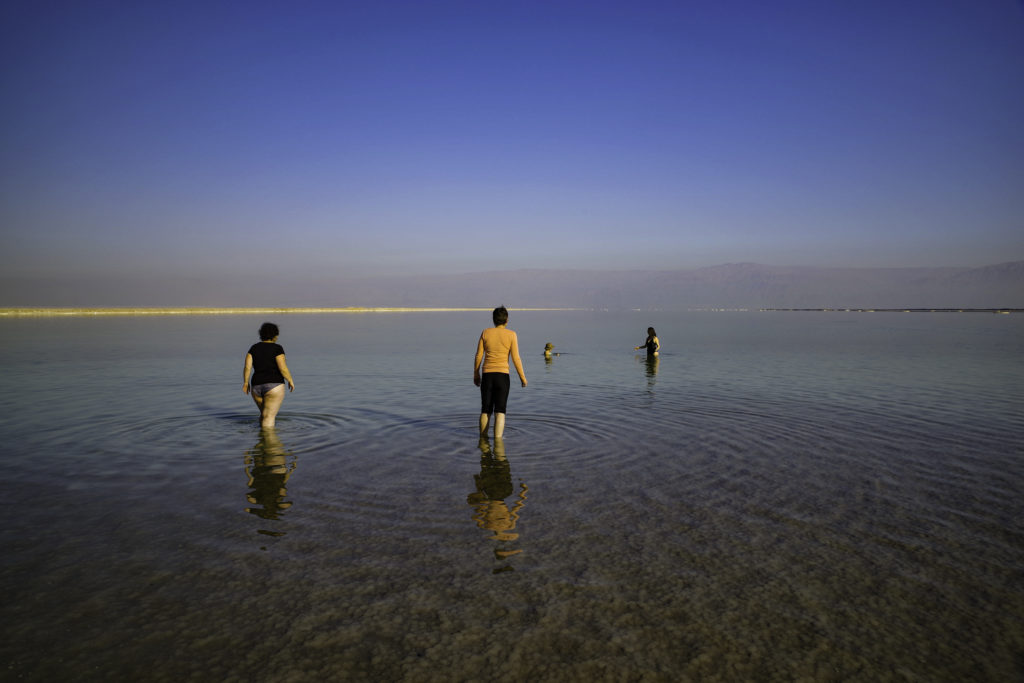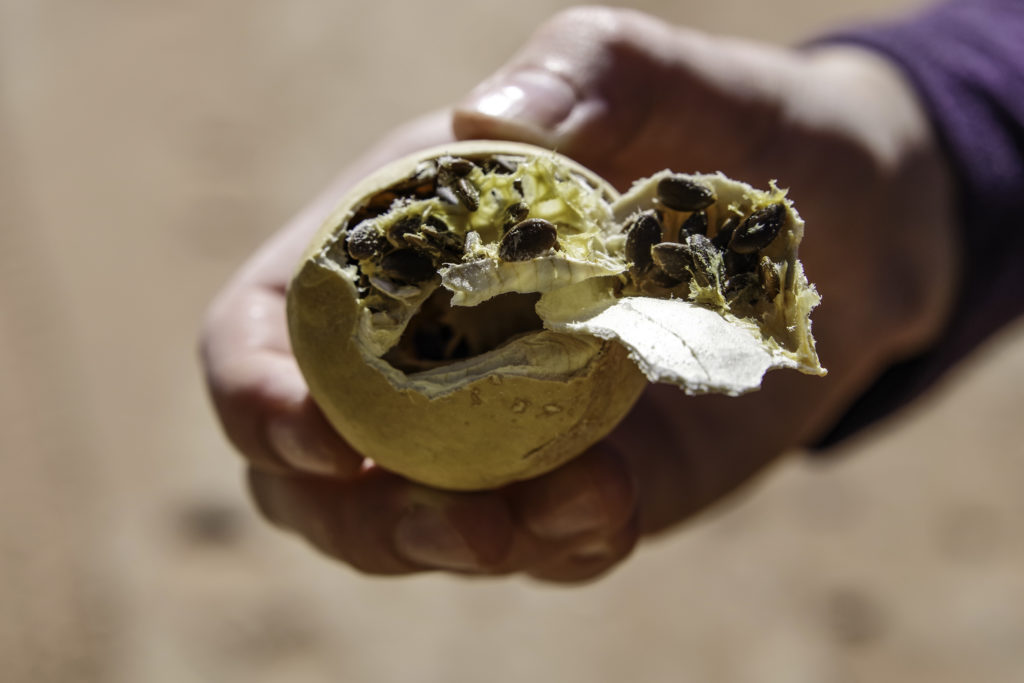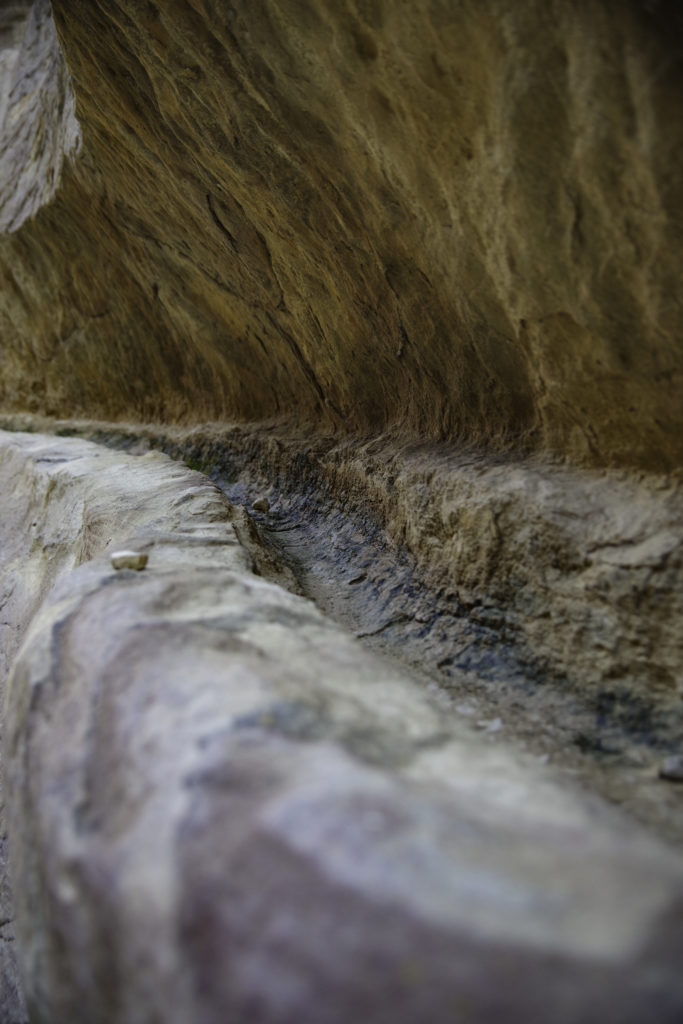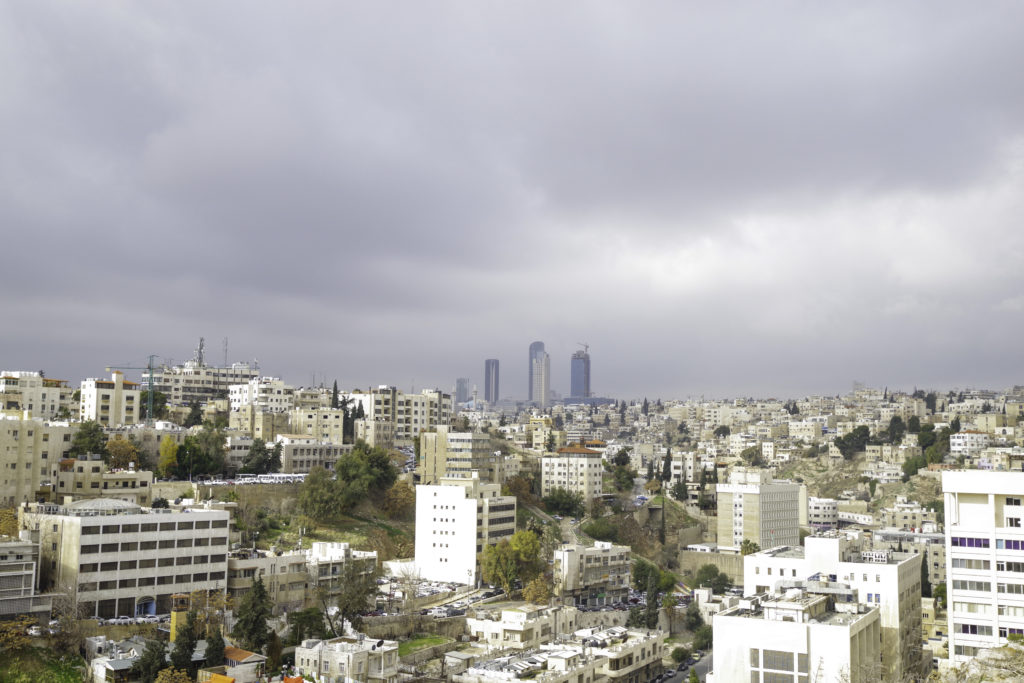We head into Berlin. Gypsies with squeegees are buzzing around. We used to have this in New York until Mayor Bloomberg put an end to it. They don’t dare come near the luxury Mercedes we’re riding in. We are staying in the Sofitel across from Gendarmenmarkt. The square is very charming but everything around it looks like office buildings—and grey cement ones at that. The itinerary has all sorts of plans but we are tired. We were supposed to get dinner at the trendy Markthalle Neun in gritty cool Kreuzberg. Where do people get the energy? I just want to keep us awake until something that would pass for an early bedtime. Lutter & Wegner is just on the corner and it looks doable. We sit outside and munch on wiener schnitzel, white asparagus with hollandaise, orange juice, and apple strudel. The strudel has nuts so it’s a visual dessert for me. Jessica declares she does not like this food at all and wants to go back to the hotel.


Gosh, we’re all over the place. Plaques on the ground like in Holland for murdered Jews—all over. Checkpoint Charlie mannequin photo op, Berlin wall by terror museum, grey skies, Holocaust memorial—stones are smooth on the sides, rough on the top and cracking all over. I’m told this is from ice; so much for German engineering. Brandenburg Gate, Linden trees, Reichtag—old on the outside, all modern on the inside and topped with a weird mirror vortex inside the domed roof. Hitler’s bunker. I am getting shocks off everything; our guide tells me Berlin is high altitude and dry. Dinner at Aigner on the other corner of the hotel. Jessica gets some sausage thing, I get schnitzel and Beelitz asparagus. There are no 7 Elevens or food shops. We end up in Rewe market, a place without popcorn.

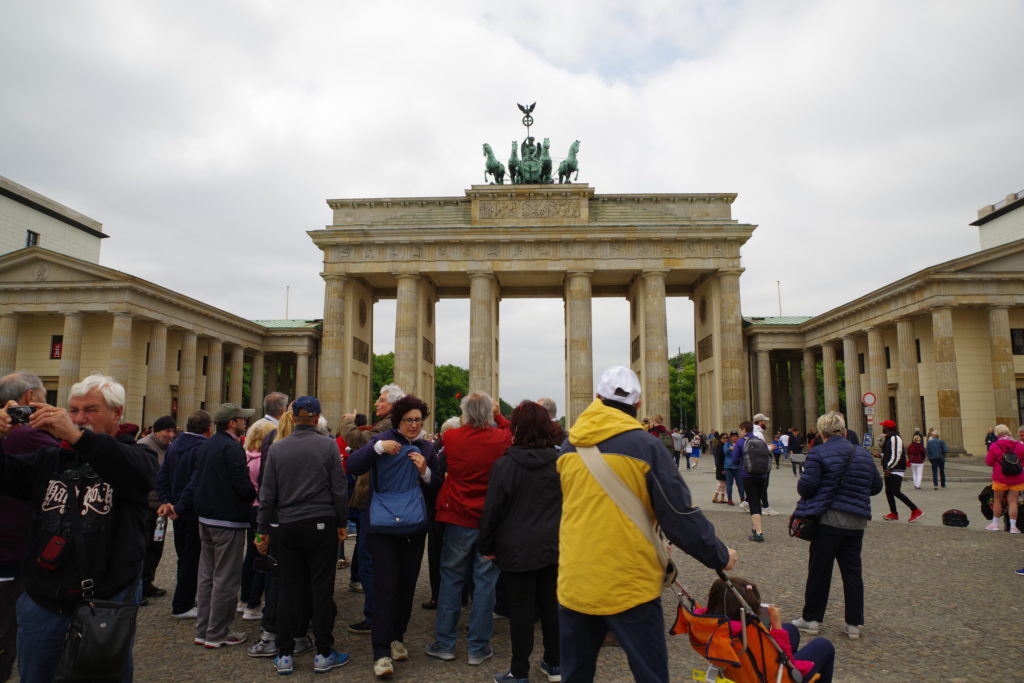
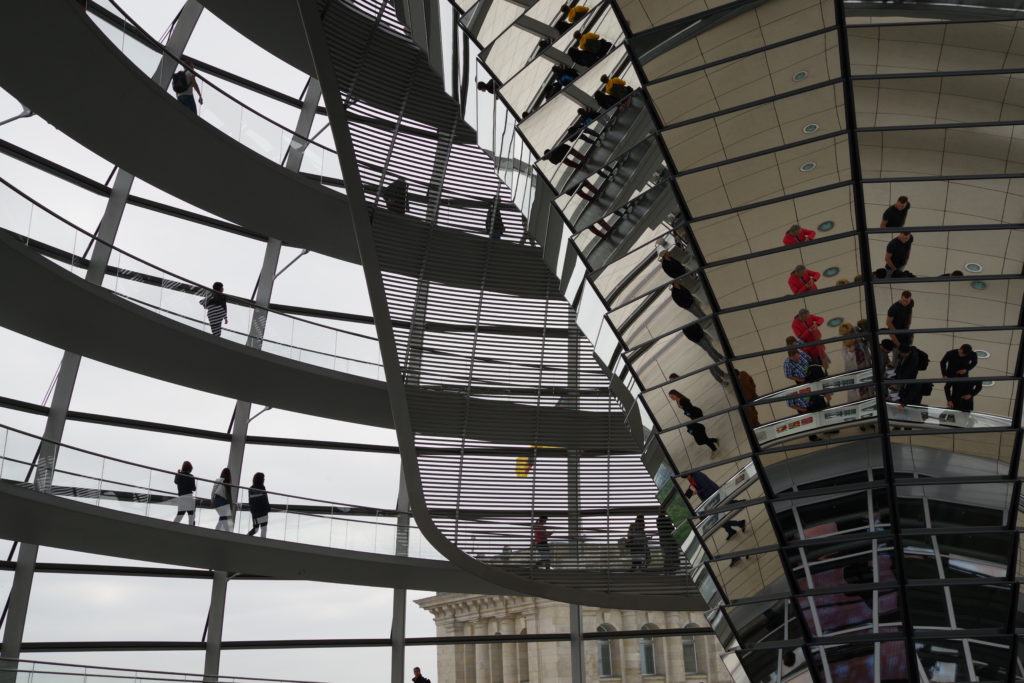

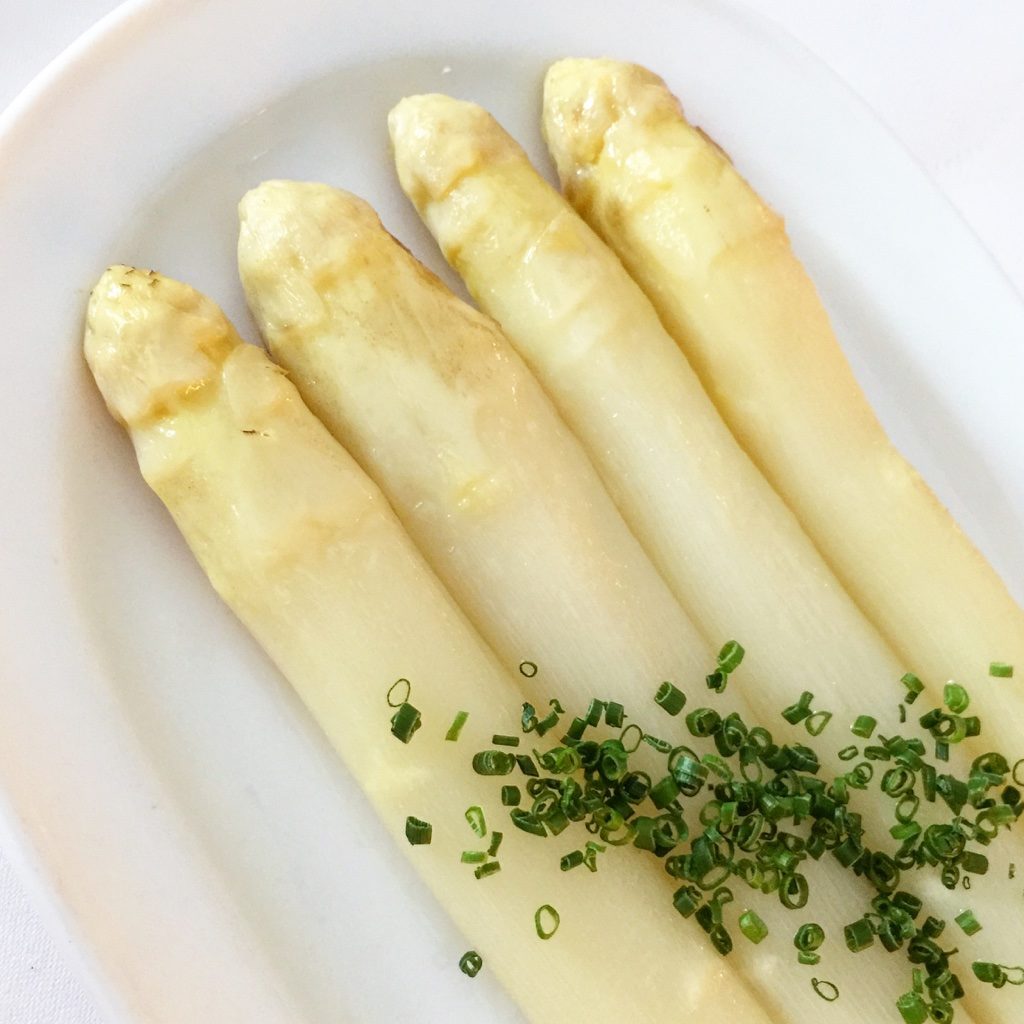
We take the U-Bahn out to Potsdam—all of the charm of the NYC subway without any of the grit. Sanssouci Palace, summer home of Fredrick the Great—misogynist, potato pusher, buried next to his Wippets. A short walk to Cecilienhof Palace—strange to have a wooden building called a palace. Site of the Potsdam conference where you can see the very table where Truman, Churchill and Stalin sat deciding the fates of millions. Then a stroll around a quaint little lake to see Glienicke Bridge of Bridge of Spies fame. We have the option to visit the Museum Barberini on the way back. We’re still tired, but I would have done it. I struggle sometimes with the feeling that I must see everything possible even though, even on a good day, you can only see so much before you just can’t—at all. Jessica says no, so I look at the guide with my hands up as if to say ‘what can I do?’. She’s hungry, so that too. Today we leave our block and cross the street to Augustiner, where they have Menu for Allergic Person. We have a pretzel, some dumplings that are okay, and Jessica gets a beer which is too strong for her so the waiter suggests a beer that is mixed with some sort of soda and she likes that.





We tour Hackescher Market on a Sunday when everything is closed. This is what you hire planners for. Then on to the Berlin Wall Memorial to see a preserved stretch of ‘no man’s land’ and learn about all the ways folks tried to escape to the west—including balloons. A walk along the East Side Gallery where I fail as usual to take the interesting picture: people posing in front of Brezhnev and Honecker kissing. We wind up at the somewhat confusing Topography of Terror exhibit. I can’t really remember anything about it other than it covered the rise of Nazism through the finale. We end up at Augustiner again because we’re too hungry to walk around. I get some sort of potato soup.




Note to self: do food tour at beginning. That way you’ll find some interesting places to go. But, no, this was our last full day in Berlin. Pfft. We went to the DDR Museum on the way, but it’s not worth mentioning, then we met up with Bite Berlin! We have pretzels with butter, Currywurst with fries, a Vietnamese sandwich (while we learn about the Vietnamese community brought in by the communist East as contract workers), cinnamon rolls, cheesecake made with Quark cheese and a finale of East German Champagne. Everything was delicious and very luckily there apparently wasn’t any fenugreek in the curry. A lot of shops were still closed since it was some sort of holiday. I had wanted to look at cookware and Birkinstocks.




We fly to Krakow tonight, but first museums. We see the memorial where Nazis burned books (Mann’s Magic Mountain was banned and burned as un-German because it portrayed weakness). We see the German history museum, the Gate of Miletus, the whimsical Ishtar Gate, but nothing compares to: Nefertiti. It is astonishing. No, she is real. It is so different from anything else for thousands of years in either direction. Could it possibly have been made in 1345 BC? How? I don’t want to see anything else. Not allowed to take her picture though. Our guide leaves us at a currywurst place in Gendarmenmarkt. I feel like I dismissed him, but I needed to call home before Arnold went to work because Nalani has been very, very sick. And then the best thing ever: we were looking for ice cream and the place that came up on maps was nowhere to be found when we happened upon a street sign with ice cream bars on it—actually Jessica walked right past it—it’s called Neuhaus, they have ice cream bars which they slowly dip and swirl through a vat of Belgian chocolate.


Things I would have done differently: the food tour at the beginning, stayed in a more lively area, maybe somewhere around Prenzlaur where we finished the food tour, looked up when holidays are, toured the kitchen at Potsdam, gotten some Turkish food.
Charming, charming, charming. The Copernicus is a lovely restored Renaissance abode with rock hard beds and a giant freezing bathroom and no shower curtain. The old town is charming. Almost no cars and ringed by a park that used to be the city defense wall. We see the castle, the basilica, we take some video of a fire-breathing dragon, we have pierogi at Hawelka, where I see this is mushroom season and mushrooms are extremely popular, and dessert at Stodi Wentzel; I haven’t seen such gorgeous desserts since Japan. We go into rest mode because tomorrow is a big day.



Auschwitz. We pass under the infamous gate: ARBEIT MACHT FREI. It’s more diminutive than I thought it would be. The whole first part of the camp feels small. Our guide, Ewelina, wastes no time: Poles are sensitive about the camp. I am told President Obama angered the Polish people when he referred to it as a “Polish death camp” when giving the Presidential Medal of Freedom to a survivor. The Poles, she says, cannot be blamed for this, they were invaded by the Germans and fought back; many of their own people died in the camps. It was originally created for Russian POW’s, then Polish political prisoners, then others and Jews. It was widely used for Jews because of the rail connections from all over Europe, and Birkenau, which we saw in the afternoon, was actually the largest death camp. I toured Dachau back in the 1980’s but there wasn’t much there, just a lot of building footings and a few ovens. Anne and Margot Frank were here before going to Bergan-Belsen but their mom died here. The Jews were sold tickets to come here, part of the Nazi psychological plan, and brought their most important possessions. Some are on display. At Birkenau, one of the train cars is set out. It’s really small. Many did not survive the trip—up to 10 days with no windows, food, or toilet. Once they got here they were told to leave their bags; they would be delivered later. Women with children under 14, elderly, and handicapped were sent right to the showers. Then long hair and gold teeth removed from bodies, with hair made into cloth. After that, most did not survive more than 3-6 months if they weren’t killed sooner by execution or medical experiment. Prisoners were overseen by German prisoners—Capos. Our last stop was a barrack for women. There were three levels of berths: the bottom one, you laid right on the brick, the top one, only the strong could manage. Many people had diarrhea and the dirt floors would turn to mud when it rained. The rails were worn smooth from the hands of people who were hoping, trying to survive.
I wanted to do a food tour today but our travel planner insisted her guide could weave it into our day. It didn’t quite work out. We’ve done food tours all over now and they’ve been a unique way of understanding the places we go but our guide wasn’t really prepared for that. We took in the statue of Pope John Paul II—a major celebrity here—before our first stop: a tour of Jagiellonian University—Copernicus went here—but the museum guide was difficult to understand and we were too many people moving through too small a space. Then onto Oskar Schindler’s factory, which has become more of a strange exhibit about the German occupation and Polish resistance. Just his office and a few rusted pots and pans remain. Then we ran through the tiny Jewish area. We could have visited the synagogue there but it wasn’t clear to me if tourists were welcome, so we decided not to do it. In my travels, I have sometimes found myself in personal or community spaces were I felt I shouldn’t be, so I try to be mindful. We drive by a piece of the ghetto wall made from Jewish tombstones. I ask to go back and take a photo. Imagine being walled in by tombstones of your family and neighbors? And then the food tour begins. We are in an old restaurant for pierogies. It may be a traditional place, I don’t know, the food doesn’t look like what I have been seeing from polish chefs on Instagram—they look like boiled lumps with haphazard garnishes. We try meat, spinach, potato and cottage cheese, but the absolute worst is the hot strawberry ones with what tastes like heavy cream poured over them. She then took us to a traditional bread place for Obwarzanek, but this was a day they couldn’t make it for some reason. We then pressed on to Stary Market, which looked about to close, for rose Paczki, which even she admitted would be stale from being out all day, and they were; then we tried some strong pressed mountain goat cheeses. I feel bad, our guide is really trying. We pass some of the preserved parts of the old city wall—St. Florian’s Gate and the Barbican. She then takes us for Kremowka at Wentzel— were we had already been going—in the main square. The she explains that she still has ‘food tour’ money left and suggests a horse and carriage ride around the main square. Many of the carriages and drivers are decked out in feathers and gold lame. We go around in a big circle, clip, clop.




Our introduction to Paris is being stuck in traffic. As per our agreement for the apartment from Paris Perfect, we must give 75 euros to a very impatient dude who has been waiting for-ev-er, to go over the apartment. He manages it in less than 10 minutes by speedtalking. This is supposed to be a bespoke kind of outfit. The apartment is charming and calming and quiet. It is a very Parisian and we have a view of the tippy top of the Eiffel Tower. But we’re hungry. We end up at Gusto a few blocks away; I had scoped them out on Tripadvisor. With their margarita pizza and tiramisu, they become ‘our’ restaurant for the week. All the other places we peek into look heavy and complicated.

I try not to cram too much into a day; I don’t want to be running from dawn to dusk. Today we have Taste of Marais tour with Paris by Mouth. We learn about croissants, butter vs. margarine, we eat croissants, they are shatter-crisp outside and butter-pillow inside. Nothing at home will satisfy me now. We have a shot-full-of-holes long, cold rise baguette. It is by itself. Jacques Genin Chocolate: basil, java cardamon, pates de fruits with strong fruit flavors. Chocolates displayed under glass frames. Then we’re off to a back room to sample cheeses and meats and wine from different regions. And then we head back to do laundry, because I have to finish laundry by 7pm so as not to disturb. And then to Gusto. I’m surprised how much I like Paris. The people watching is awesome—everyone really is chic, but in a casual, relaxed way.


Gothic Paris with Context. We sit on a bench overlooking the Seine overlooking Notre Dame. We glide over history: the Romans founded it as Lutetia, after they left; a Gallic tribe called Parisi moved back in. Modern Paris with its wide boulevards is the work of Haussman under Napoleon III to keep insurgents from barricading. We go inside Notre Dame. It is very dark. Then up a spiral staircase to Sainte Chapelle commissioned by Louis IX to hold his collection of relics, including a doubtful crown of thorns—which is back over at Notre Dame for display on certain days. The stained glass set on stun. We walk back, eat at Gusto, and sleep.


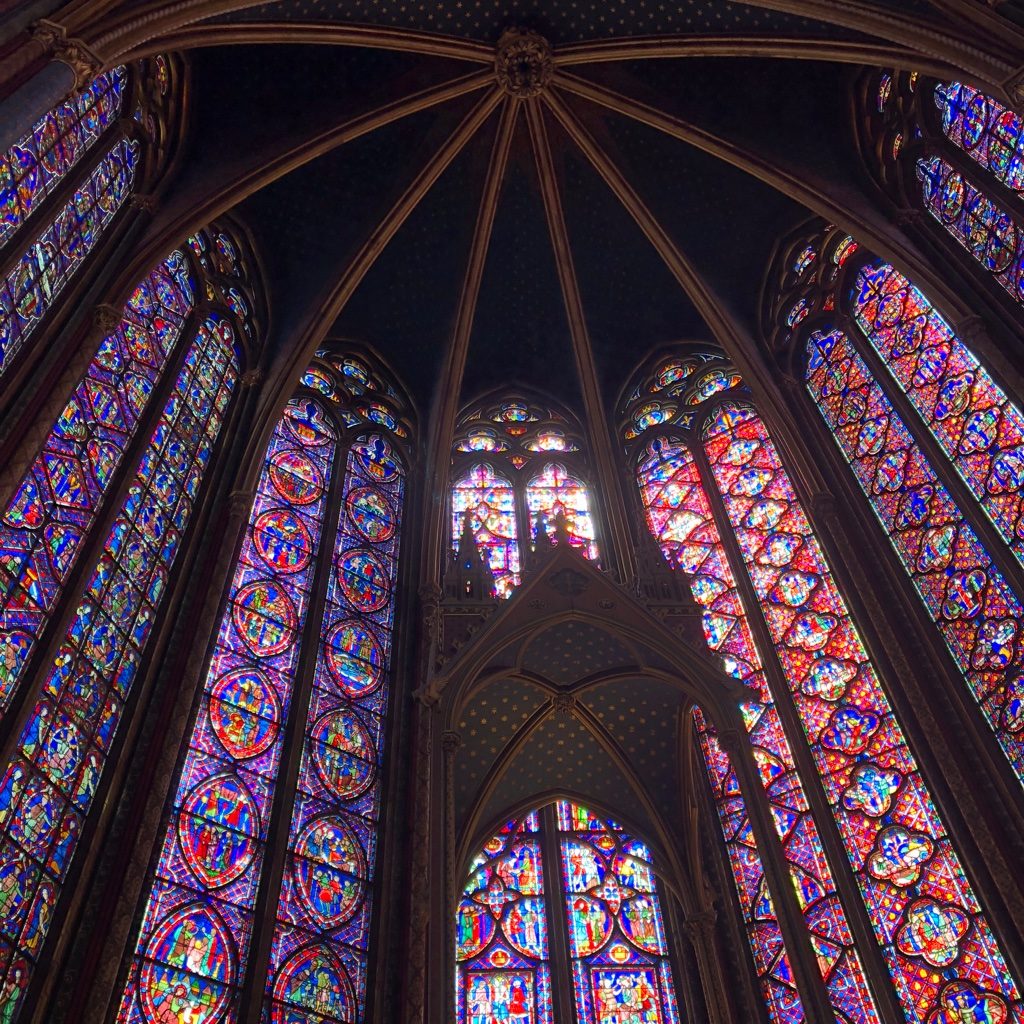

Versailles. I don’t know. I guess I would have felt weird missing it. I wouldn’t go back though. I hired Veronica with Tours by Locals. We met near a train station, but the ticket machine was broken and, according to her, you cannot board without a ticket, also the next station is a bit of a walk and we have timed entry tickets and would possibly not make it, also 25 minute walk from train station at Versailles. Would you mind we take a taxi? I tell her I’ll call Uber. It was like another 75 euros. Hmm. Poor planning on her part. Once you’re in these problems, you have to just spend your way out.
It’s not overly crowded. She points out the wood floors and bronze frames painted gold. Some kings did not have the money for marble floors or real gold frames. All the orange trees and palms are out from the Orangerie. Plants are planted in pots, so they can be taken in in winter or moved. The place is endless: gardens tucked here and there, fountains, a lake, and on this day, May 30th, it is almost unbearably hot and hardly any shade. We make our way to the Hameau, Marie Antionette’s little farm village. I think we should have started here. Then the Petit Trianon, where Marie could have privacy. I only know something about this because I watched Sophia Coppola’s Marie Antionette. Lunch—I don’t remember what — at the Trianon. I recognize one garden from A Little Chaos, a weird Kate Winslet movie. Then a tour of the government part of the palace. I’m fried at this point and we take a hot, crowded train back. Thirsty too. Gusto and die.




Cheese mites. Paris by Mouth Latin Quarter food tour. We stop in cheese store. I could spend all day here; the cheeses are so unusual looking. Desserts displayed like jewelry—none of which I can have, but they make something for me and my allergies, and a charcuterie of potted things. We settle around a table in a wine store. I’m hoping real French wine doesn’t turn my face red. No such luck. Thank goodness Jessica can drink wine.




I’m so glad I hired a guide for D’Orsay, or any museum from now on; otherwise it’s just a lot of art floating by. We have Lorraine from Context, an effortlessly chic French person. She wants us to appreciate all the radical things here. We look at two different versions of The Spring, one by Ingres and one by Courbet. Nudity was okay as long as it was mythological figures and their bodies were idealized. Courbet’s version depicted a real naked person posed like a real person. Clesinger’s Woman Bitten by a Snake looks like a real woman (including cellulite on her butt) maybe taking pleasure in being bitten by a snake? The next radical idea: peasants. Millet’s The Gleaners, she says, is a noble painting of peasants aimed at annoying the bourgeois. The next work I come to love just because of Lorraine’s description of it: “This painting is about a sound.” A man and a woman in a field with their heads bowed, the church bells from the steeple on the horizon, she says, are ringing.This is Millet’s L’Angelus.




Next we encounter Carpeaux Dance. Made for an opera house, it was once doused in black ink because although it portrays mythological figures, the showing of teeth and eyes made it all too real. Art rarely causes such a ruckus nowadays. But it gets worse. Manet’s Olympia casts a prostitute as Venus casting her languorous gaze directly at you. Cabanel’s classical The Birth of Venus was, on the other hand, well received. Manet did it again with The Picnic, a modern rendition of Titian’s The Pastoral Concert. It was rejected for exhibition and now here it is. Et Voila!


I love the dappled light effects in Renoir’s Dancing at the Moulin de la Galette. The rich are in top hats and the lower classes in straw ones. We see this contrast again in Dancing in the Town and Dancing in the Countryside. With a straw hat on the ground, the countryside looks like much more fun. She shows us a Monet where you can see some of the canvas around the edges. Painters like Monet would often leave exposed canvas around the edges to add a kind of spontaneity and then owners would cover it up with big gold frames. The museum chose to leave the gold frames on as part of their history and painted the walls a dark teal so the paintings would pop. Lorraine encourages us to look closely at the Monets. Impressionism looks abstract up close. The dancers in his paintings were most often lower class and wealthy men would come and sponsor them. Okay. I also finally learn why a lot of Gauguin’s paintings look confusing: he was painting different perspectives at once. You need to move around the painting to take it all in.

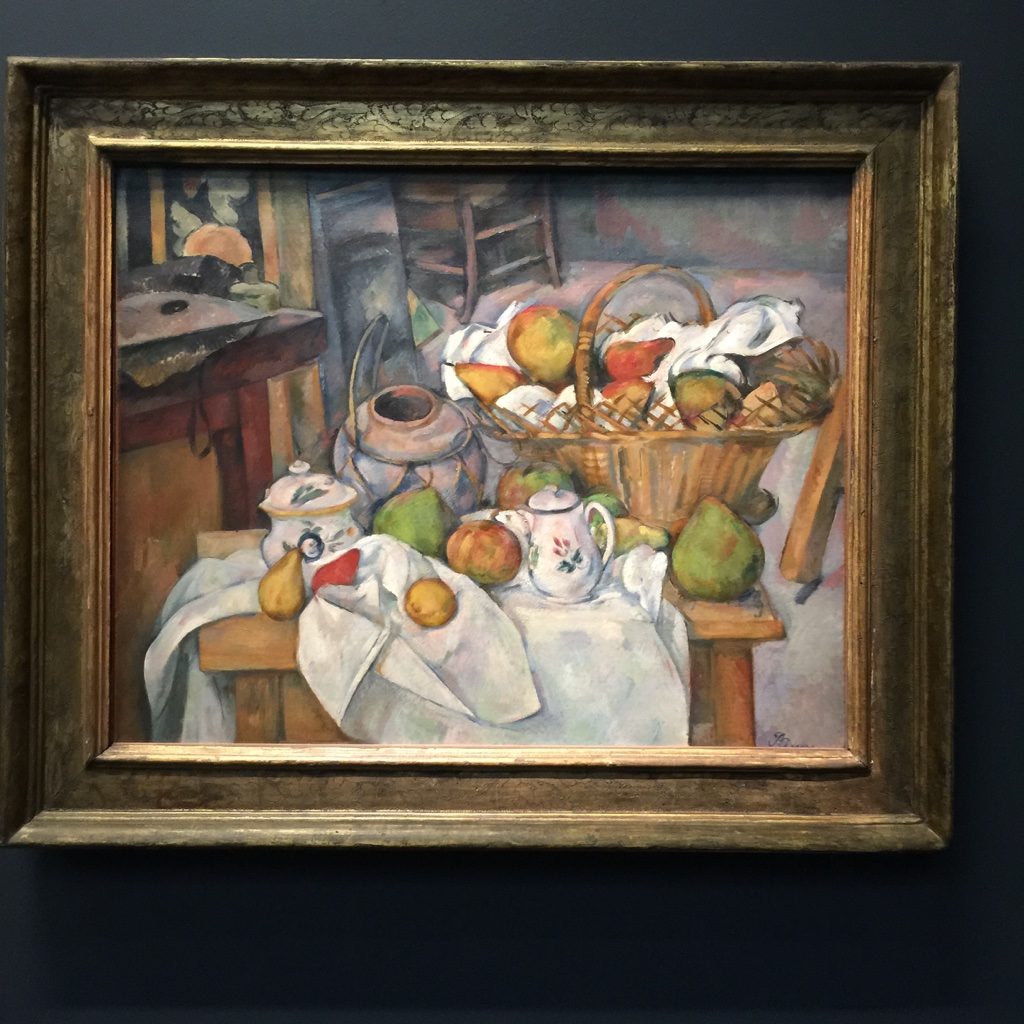
We enter the Louvre through the pyramid thing. It’s hot under there. We walk through Napoleon’s apartments. I think Lorraine says the chandelier in the reception area is the largest ever. It is big. We see the Arago marker for the Paris meridian. And then a sculpture of a lion biting a guy in the butt, but the conversation is about how sculptors needed to build in supports for marble sculptures and how metal casting, as shown in a sculpture of a naked guy and a large serpent, allowed more freedom. The Stele of Hamarabi is here. Wow. Lorraine points to the legs of some mythical Assyrian gatekeeper creatures and shows us the multiple legs were meant to convey motion. A lot of Roman and Greek gods and goddesses and religious paintings and then, of course, the Mona Lisa. She talks about the painting effect sfumato, how he worked on the painting for years. It was also once stolen. But here, tucked behind glass, cordoned off, and with a mass of people crowded around it, it seems diminutive. She tells us that is you can walk across it, her eyes will look as if they follow you. That would be cool to see; maybe they could put a conveyor belt in front of it. Before we go, I ask her to show me the Titian painting that The Picnic was based on.

The last day. I left it open and Jessica found out there was horse racing at Longchamp. It was such a beautiful day. The whole place had been redone in woods with a grass lawn; none of the griminess of tracks back home. You could see the tip of Eiffel Tower. Last dinner at Gusto. I like Paris.


We have a little bit of time before our train to Bayeux. We head over to see the classic viewpoint of the tower and then find out Gusto won’t open in time for lunch, so we have sandwiches on a bench. The train station makes me nervous, I hope we get on the right train. The train is super crowded and we end up sitting on the floor. The tickets were supposed to be for assigned seats, but I never did find the seats and there was no one to ask, no one bothered to collect the tickets. We get off at the right place and have to hike our bags up a steep overpass because the elevator isn’t working. Luckily we’re not handicapped. Then we get to the hotel and we’re given a smoking hot room in the annex attic with no air conditioner and sealed windows. Yes, of course we can change to a room with AC and windows that open, there will be an extra charge, of course. Dinner at the hotel was pretty good, salmon and vegetables, and the weather was nice. The next three days would be chilly and drizzly, just like it was back in 1944. And we would eat outside on the patio because we didn’t make reservations. Some diners were offered blankets for their legs. Not us.
Thing are much further apart than they look. It takes almost an hour over country roads to get to Utah beach. We’ll be moving through a lot of history in two days. The beach is broad and flat; at low tide, the ocean is far, far out. Horses in harnesses trot past. We head to the Utah Beach Museum to see the planes and boats used in the operation. On our way to St. Marie Eglise, our guide shows us a fence made from the portable runways laid down after the invasion. Everyone was poor and everything was damaged after the war; anything that could be recycled was. We walk around the town and see the church with dummy parachutist stuck on the steeple. She says this did not happen and then talks about the airborne operation that began in the early hours of June 6th. There was a tremendous amount of luck involved: smoke from the bombing before the invasion, the weather clearing. She shows us a metal fence with dents from shrapnel. “Not much to see,” she explains that it was a terrible time and no one would have thought anyone would be a tourist for such things. Absurd! Everyone wanted to clean things up and forget. The town is very crowded and the few lunch places are overwhelmed. Eva manages to get us service and the food is enough to keep us going. I had some sort of steak that was a impossible to cut through. I don’t know about French food.



The Germans had fake airfields with wooden bombs and the allies had dummy parachutists. Later, someone made a wedding dress from a parachute. We see this at the Airborne Museum. The on to the German cemetery La Cambe. Very solemn and dark. Many of the soldiers were very young. Eva tells us the more experienced soldiers were at the Russian front. Another stroke of luck in the defeat of Rommel’s Atlantic Wall.
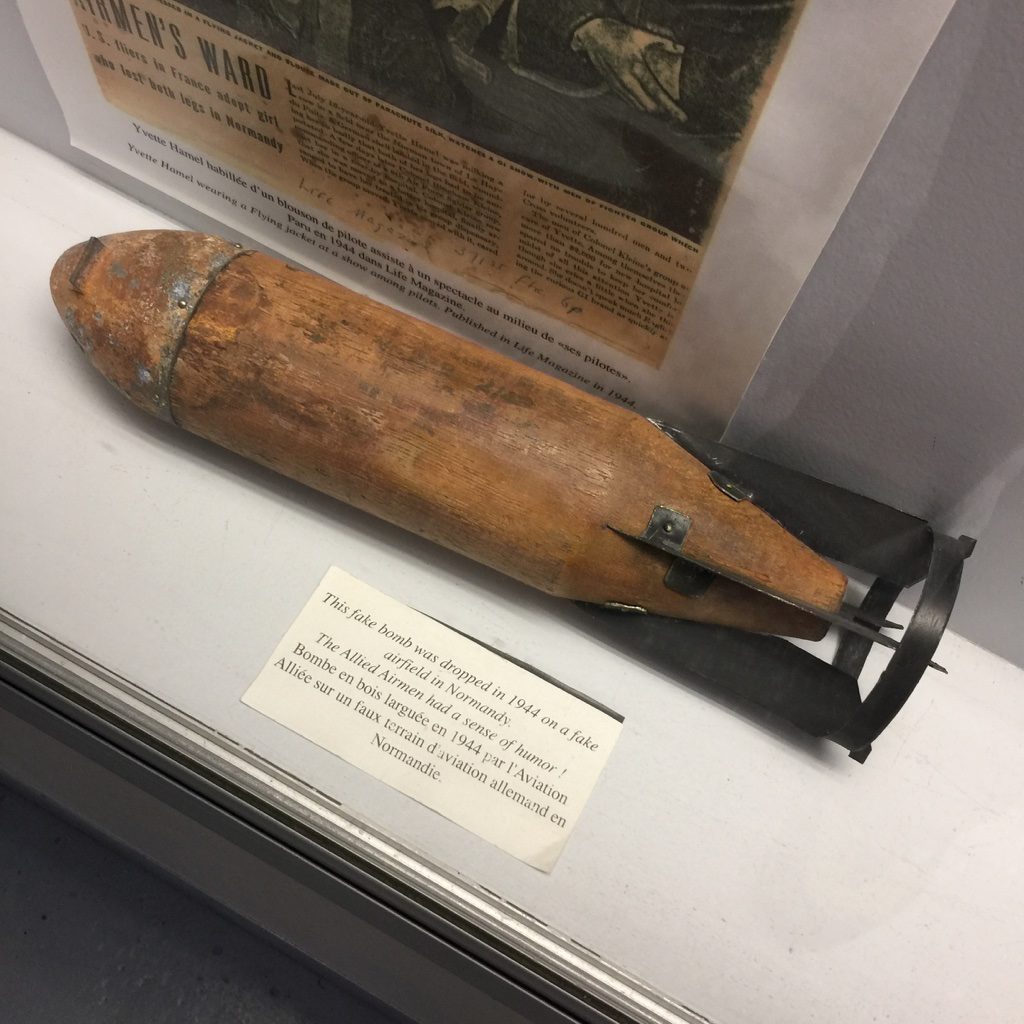



There are a lot of people around in 1940’s clothing and uniforms and jeeps and stuff. Tomorrow is the 74th anniversary. We visit Omaha Beach, which had the most casualties. Another foggy, misty day. We move on to Point du Hoc. You can’t really see the giant dents in the ground from the allied bombing the way it it shows up in aerial views but you can appreciate the difficulty of scaling the cliff up to the German gun battery. Eva says is was a little easier to climb because one of the bombs caused part of the cliff to crumble. More luck.
The weather lets up a bit when we visit the American cemetery overlooking Omaha beach. It’s much more moving in person because of how vast it is. There are bronze rosettes on the wall of the missing for service members whose remains were later found. The weather was turning again when we visited the Longues sur Mer gun battery. I would say this is something you could miss. Our last stop was the artificial harbor Arromanches. You could see some of the last pieces of it and we probably would have gone down one the beach it it weren’t for the rain and wind. There is a museum there with a 360° movie about the war which Jessica loved so much we saw it a second time. And that was an intense two days. If you go, it’s a lot of distance to cover; some tours do it in one day but that would be just crazy. Two is good. I thought we were really lucky to get a guide so close to the anniversary, many were booked up, but she says that, overall, there are less and less tourists as the veterans and people who lived through the war have passed away.


We have a little time the next day to see the Bayeux tapestry before our train back to Paris. Where was this thing ever unfurled? It is astronomically long.
Back in Paris! We are staying in a cute little hotel. It is, I think, in the 6th Arrondissement. It’s much livelier than where we were before. We find an Italian place for dinner. The next day, we head for Notre Dame again. This time we will climb the bell tower for views of Paris and the gargoyles. We didn’t go up the Eiffel Tower, but I think this is a better view; it is a beautiful day and you can see forever, plus the gargoyles and the enormous bell are cool. We press on to the Natural History Museum. I think we missed some rooms, we never saw the dinosaurs or evolution exhibits; all the signage was in French and it was very dark. They did have a piece of the Chelyabinsk meteor. We bought a separate, and expensive, ticket for a dinosaur exhibit, which I thought would be where all the dinosaur stuff would be, but it was really just a large animatronic T-Rex. Jessica was hoping to get a t-shirt, but they only had kid sizes. But then again, I don’t see any adults wearing t-shirts here in Paris. After dinner, we walk by Louis Vuitton on Saint Germain and out of the corner of my eye, I see the bucket bag. I’m thinking. We get back to the hotel and I decide it’s now or never. It really is the very thing I have been looking for and for a brief five minutes walking back to the hotel, I am a person with a big Louis Vuitton shopping bag.
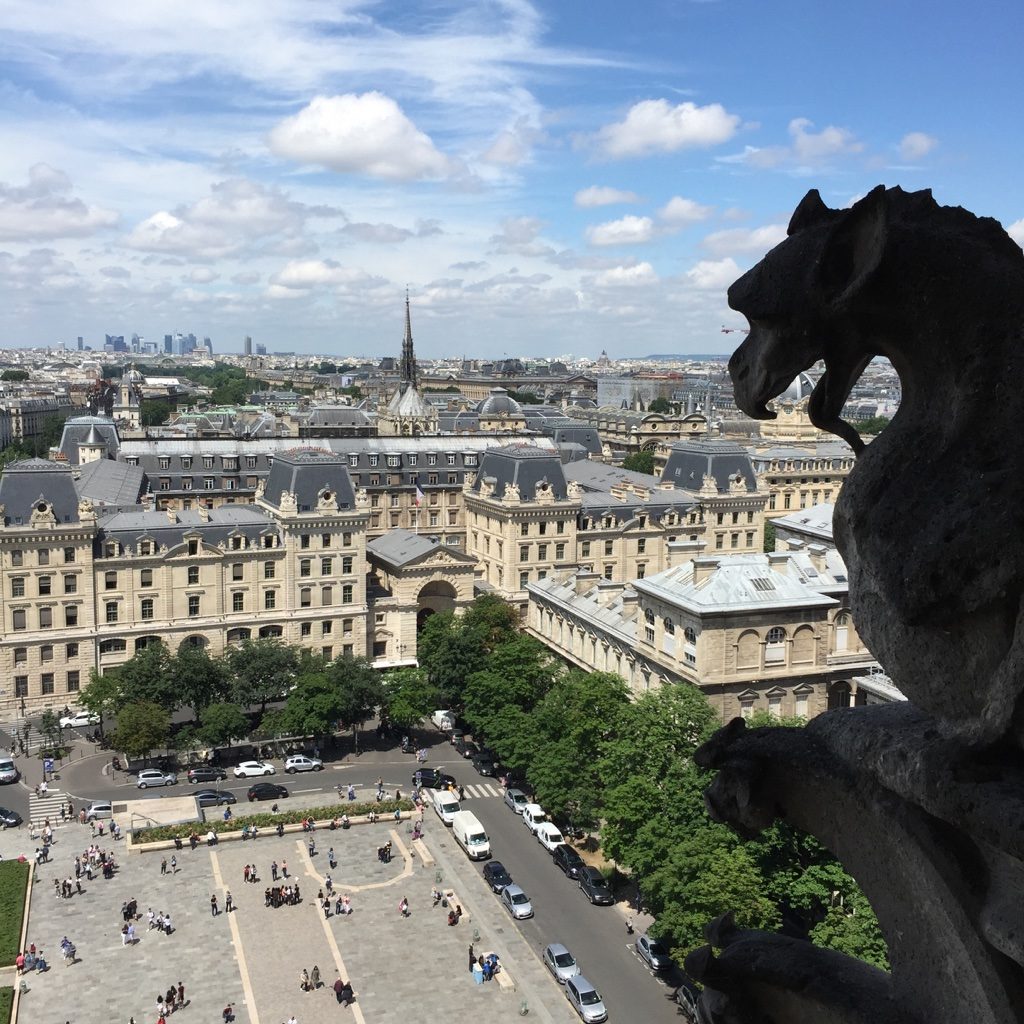
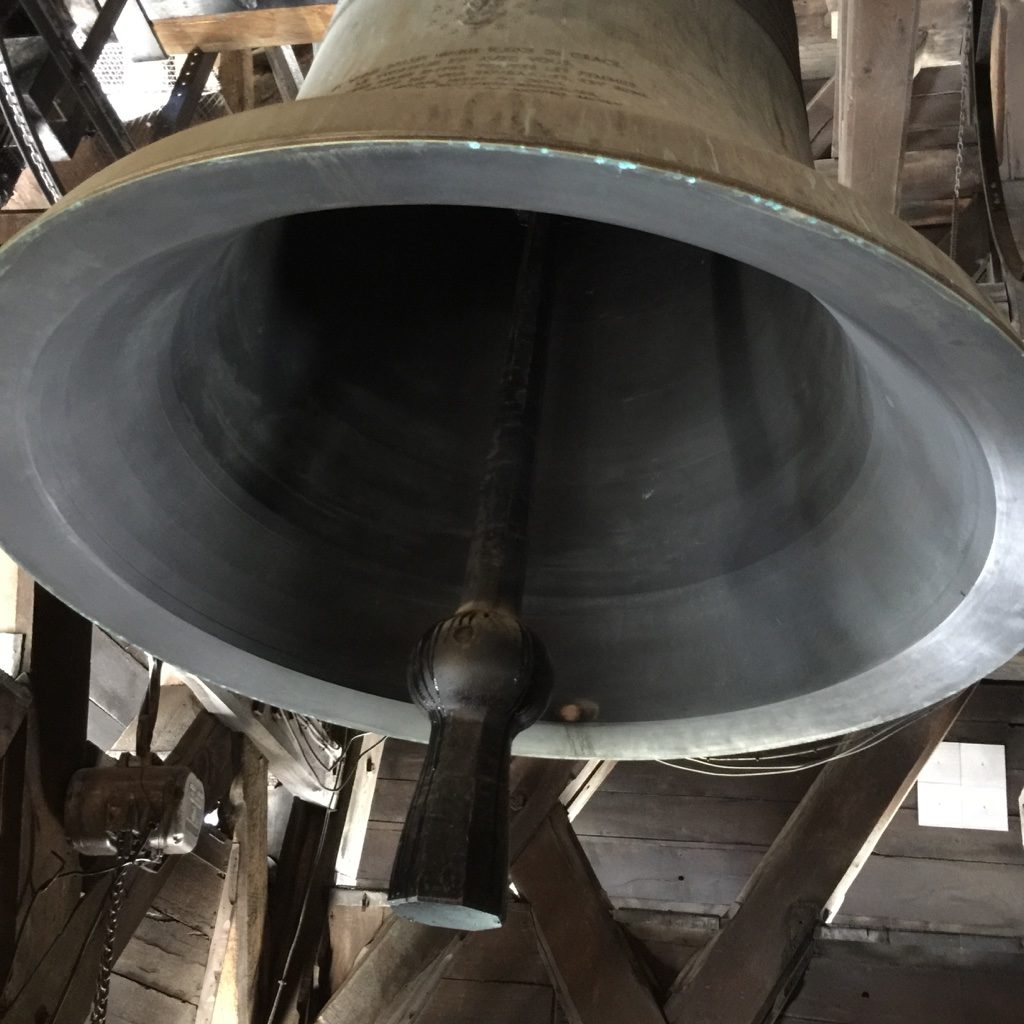







Side note. I reported everything on my customs form—I had been collecting all the receipts in an envelope just for this purpose—so I knew I was over the limit and would have to pay. Out of all the passengers on all the international flights arriving, I was the only one at the customs desk. They had to go find this customs person. It appeared he had been woken up. Anyways. Everything went smoothly, although he was a little flummoxed that someone would pay that much for a purse. I only had to pay something like twelve or thirteen dollars for the peace of mind that honesty brings.






